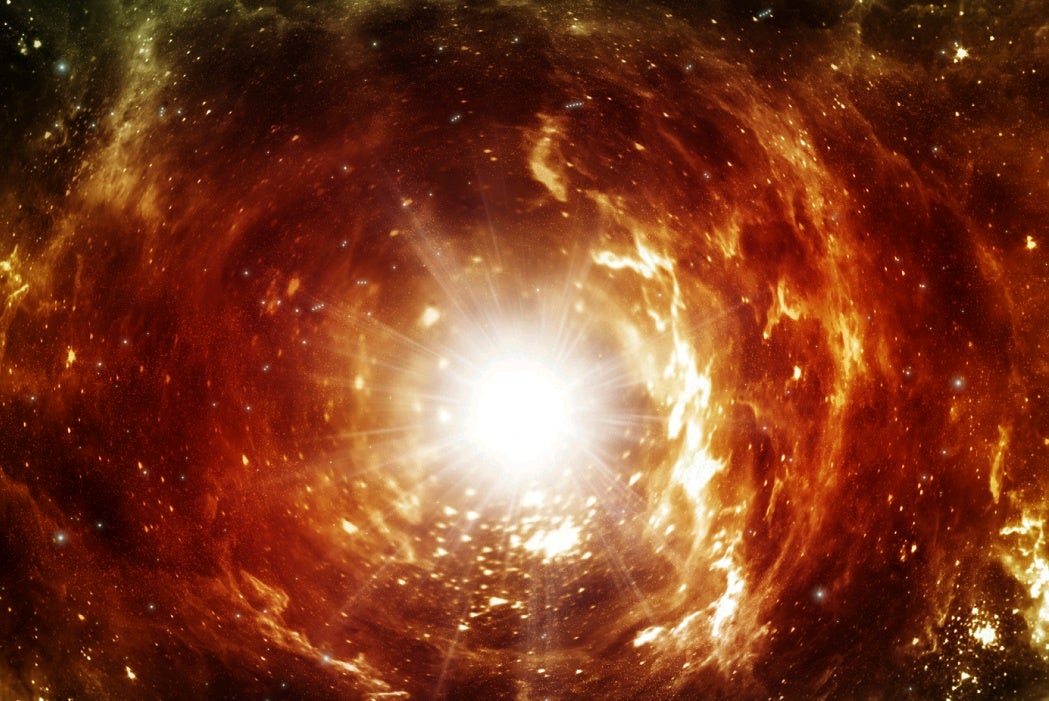There are black holes, and then there are huge black holes. Astronomers have found the largest black hole ever discovered, with a mass more than 17 billion times that of the sun. The new black hole is wider than the entire orbit of Neptune, and seems to take up the majority of the distant galaxy NGC 1277.
Black holes are so elusive that proof of their existence was not provided until 1999. This new object, however, is a whole new category of galactic player. Huge black holes are so elusive in part because they cannot be directly observed, according to a 1986 Science News article by D.E. Thomsen. Since not even light can escape a black hole, it is impossible to see one through a light telescope even if one were in range. It’s not certain if black holes emit any radiation or not, so there is nothing to detect.
So how do we know that these massive black holes exist? Astronomers must rely on indirect evidence, such as the behavior of stars near a black hole’s massive gravity. Thomsen notes that while a regular black hole is formed by the collapse of one large star, supermassive black holes are formed by the collapse of hundreds of such stars. The gravity produced by such an object is enough to pull entire galaxies into their orbit, and all energy and matter nearby is eventually pulled across the massive black hole’s threshold, or event horizon. And then?
The massive gravity created by these objects does more than capture matter. Many of these massive objects are extremely old, as old or older than stars themselves, as described in a 2005 paper by Martin Haenehlt. Haenehlt describes how the black hole keeps on growing after its formation, its massive gravity contributing to the growth of the galaxies themselves.
Supermassive black holes can collide with other black holes, merging to become even larger and in the process creating merged galaxies of stars. In other words, there might not be defined galaxies at all without giant black holes! And there’s more: basically every galaxy has a massive black hole at its center, holding the galaxy together while slowly feeding on it. Now that’s passive- aggressive.
It all just goes to show that the universe is pretty much a bottomless pit of mysteries. The understanding of black holes has gone from theoretical, to real, to enormous. The one question that is still the stuff of science fiction is the mystery of what happens to an object that gets sucked in. According to Thomsen, this matter “disappears from the known universe.” According to the Law of Conservation of Matter, it must exist somewhere, in some form.
Care to find out? After you.







